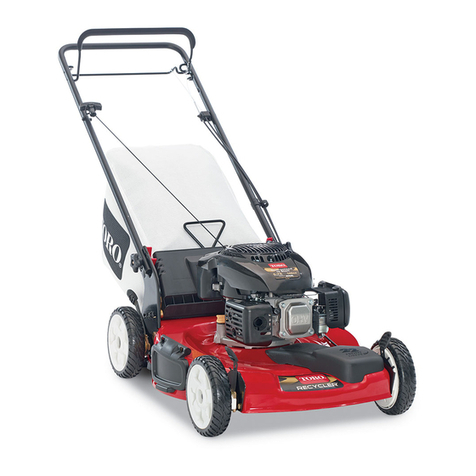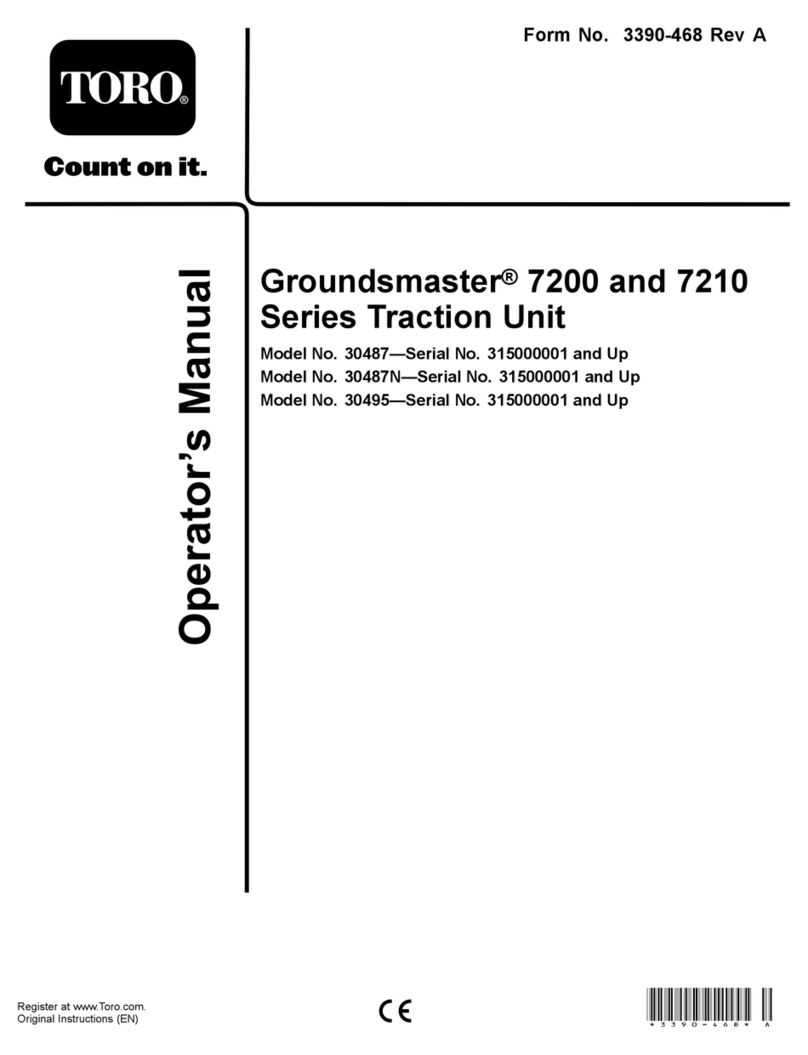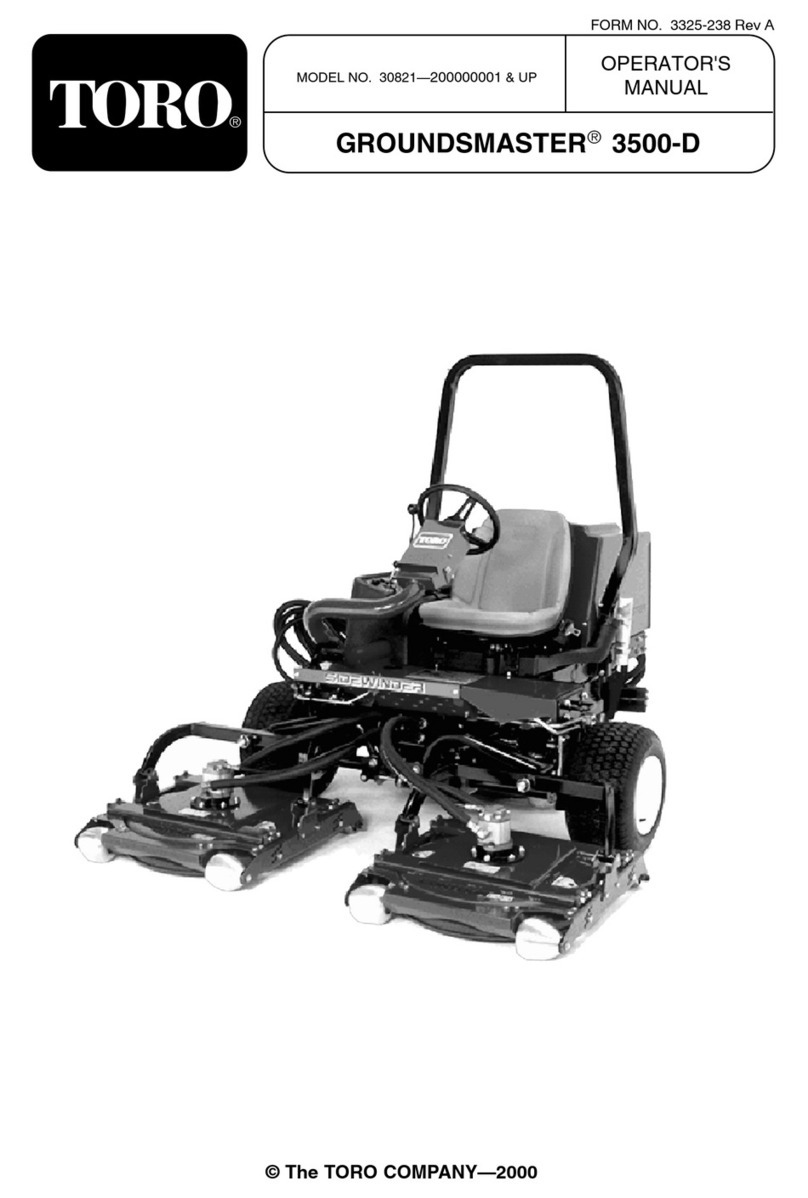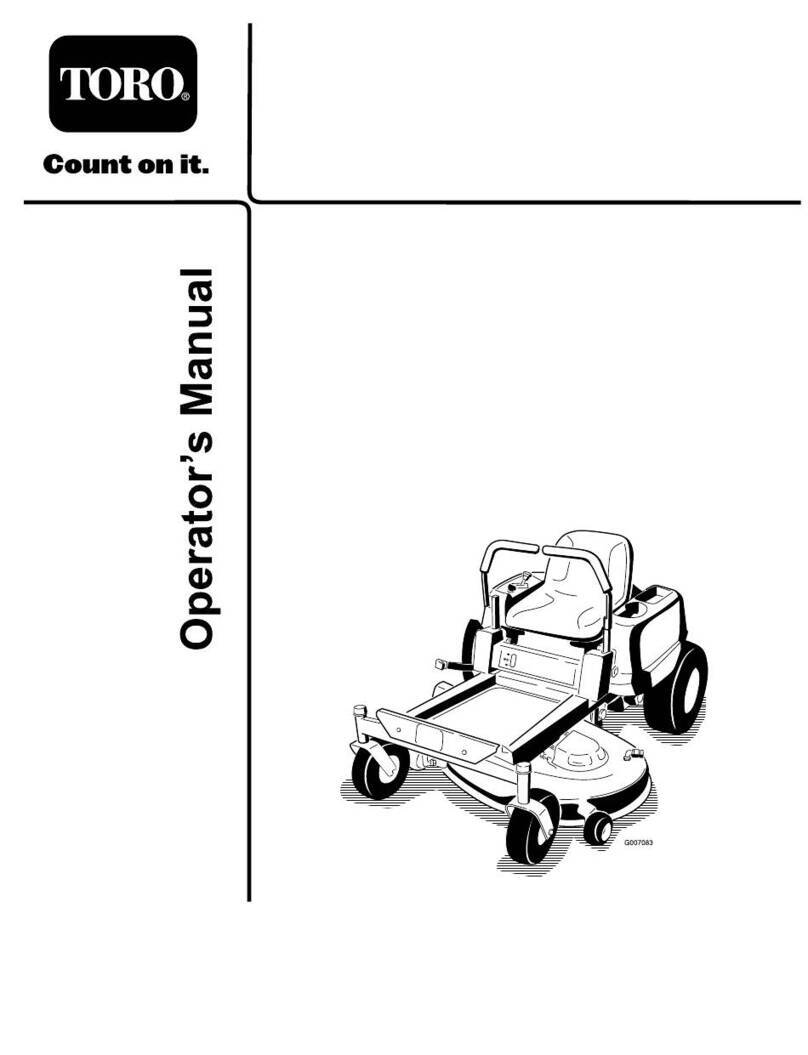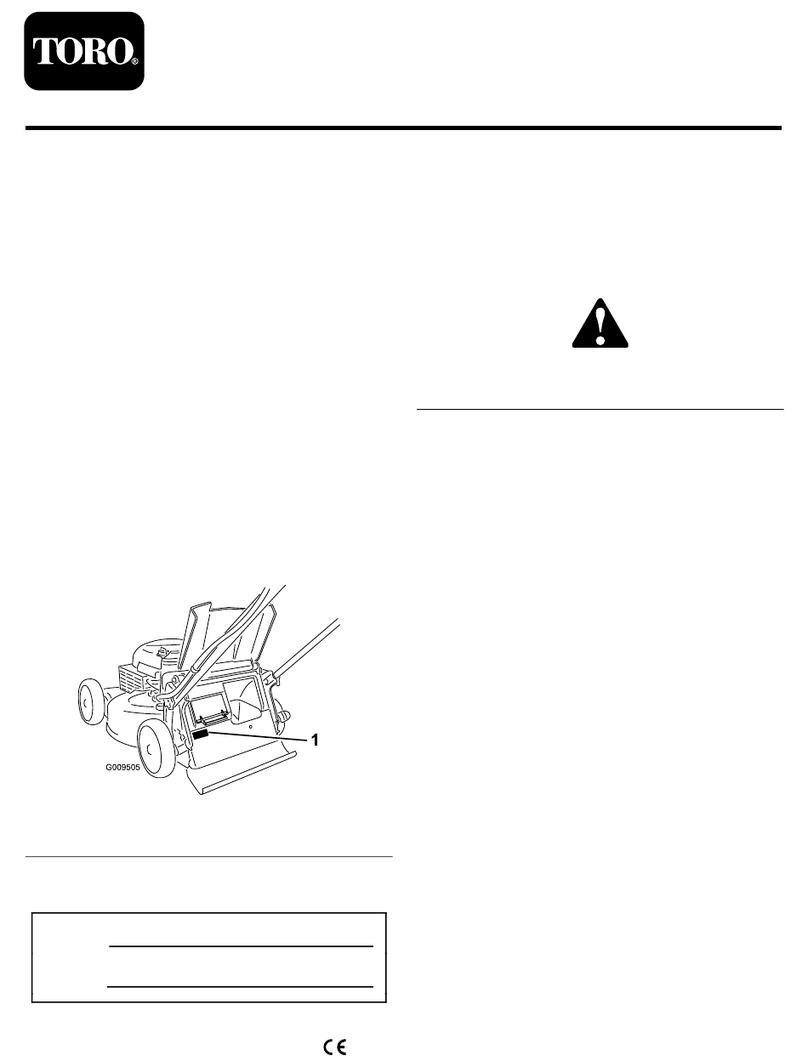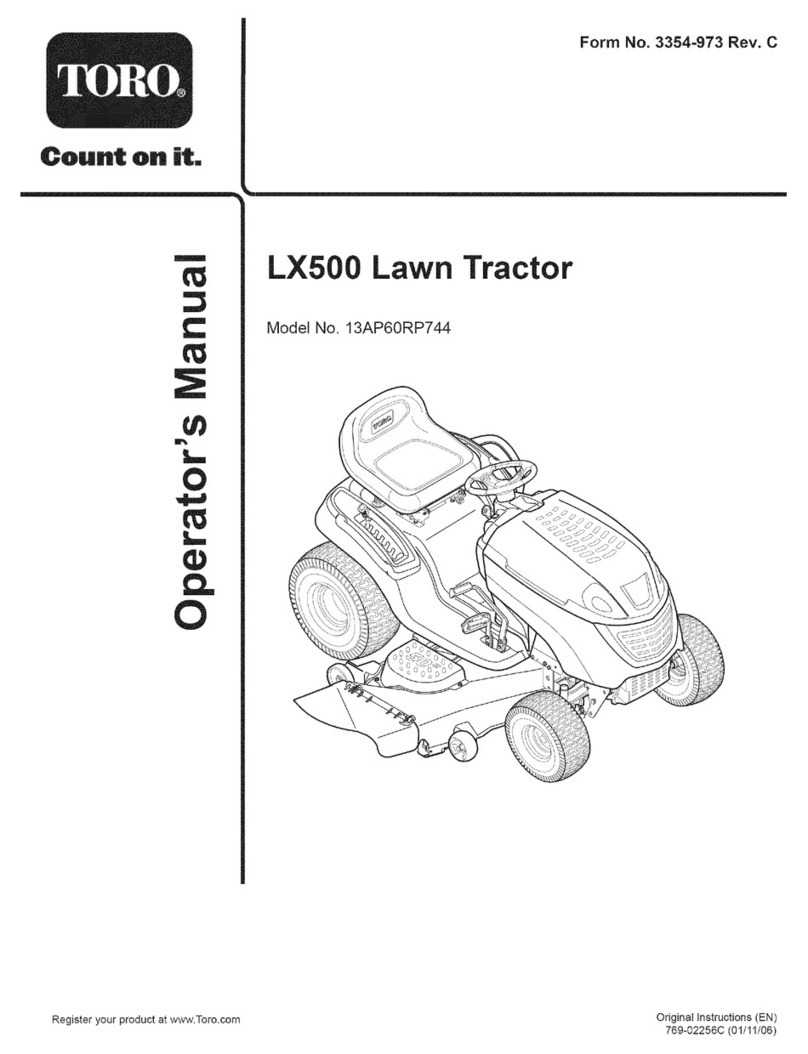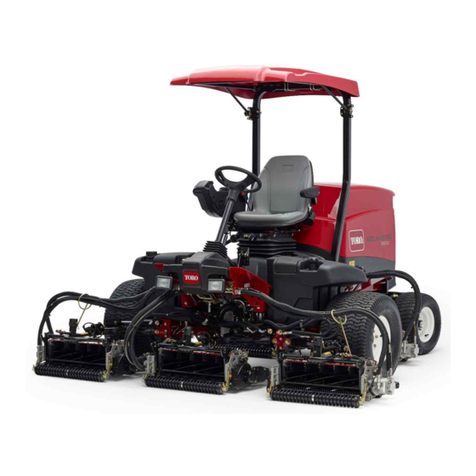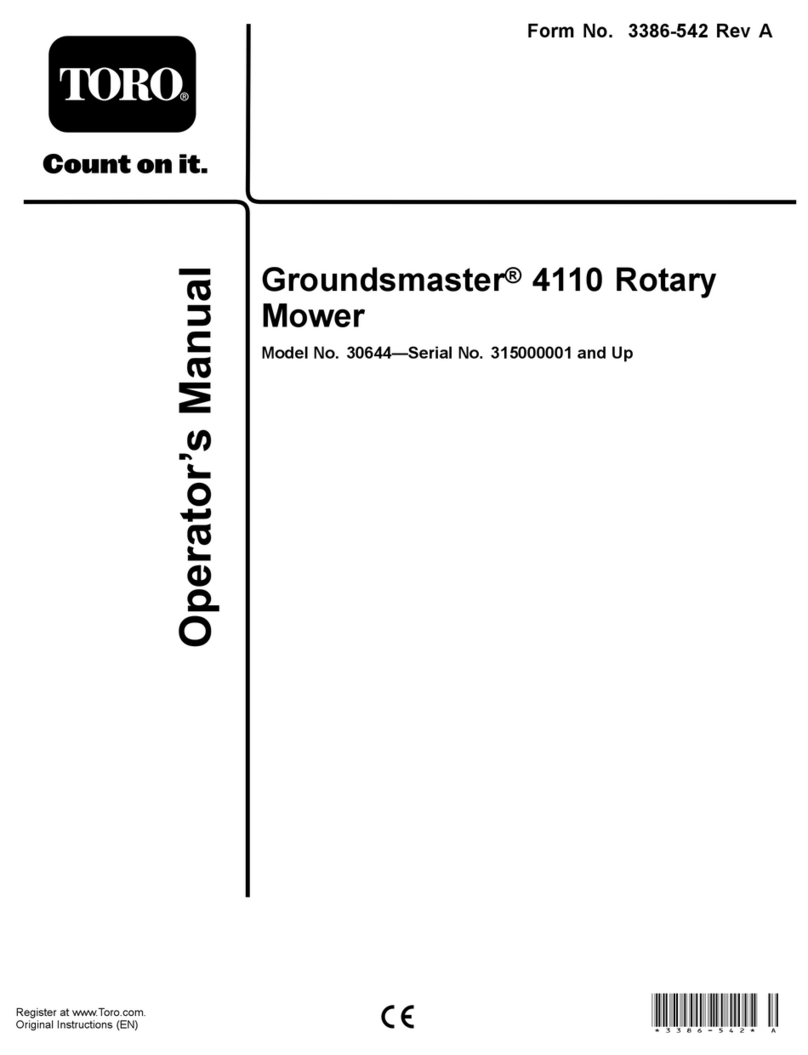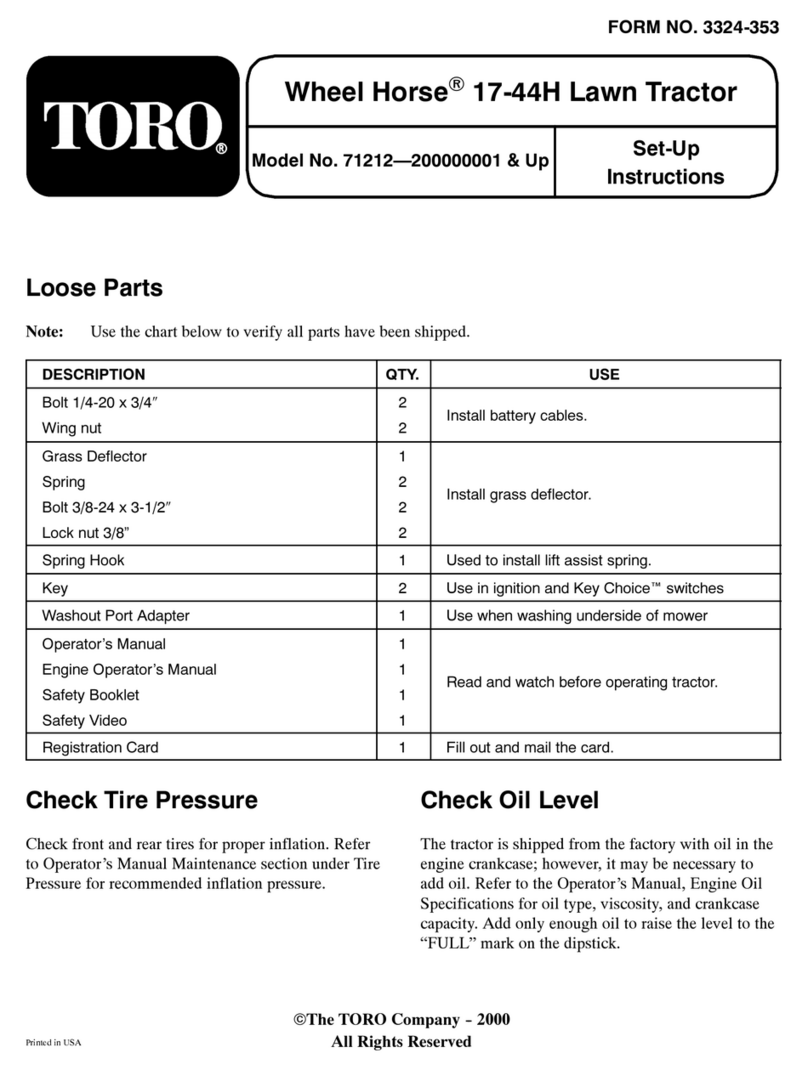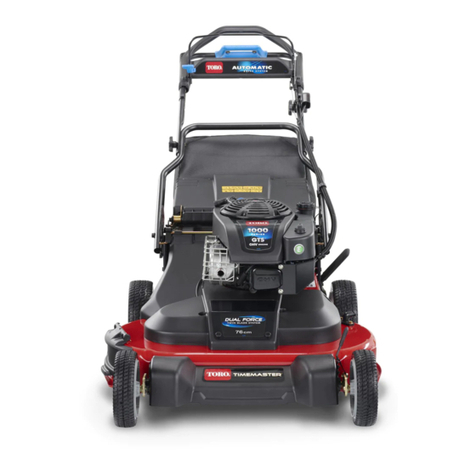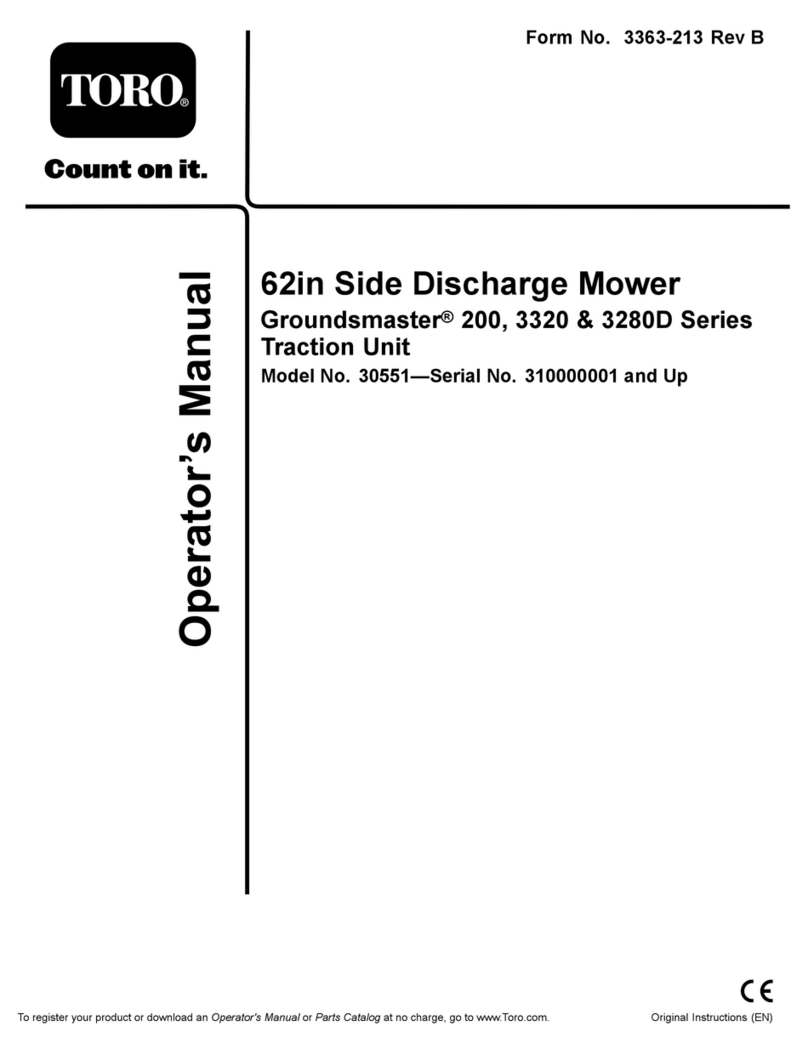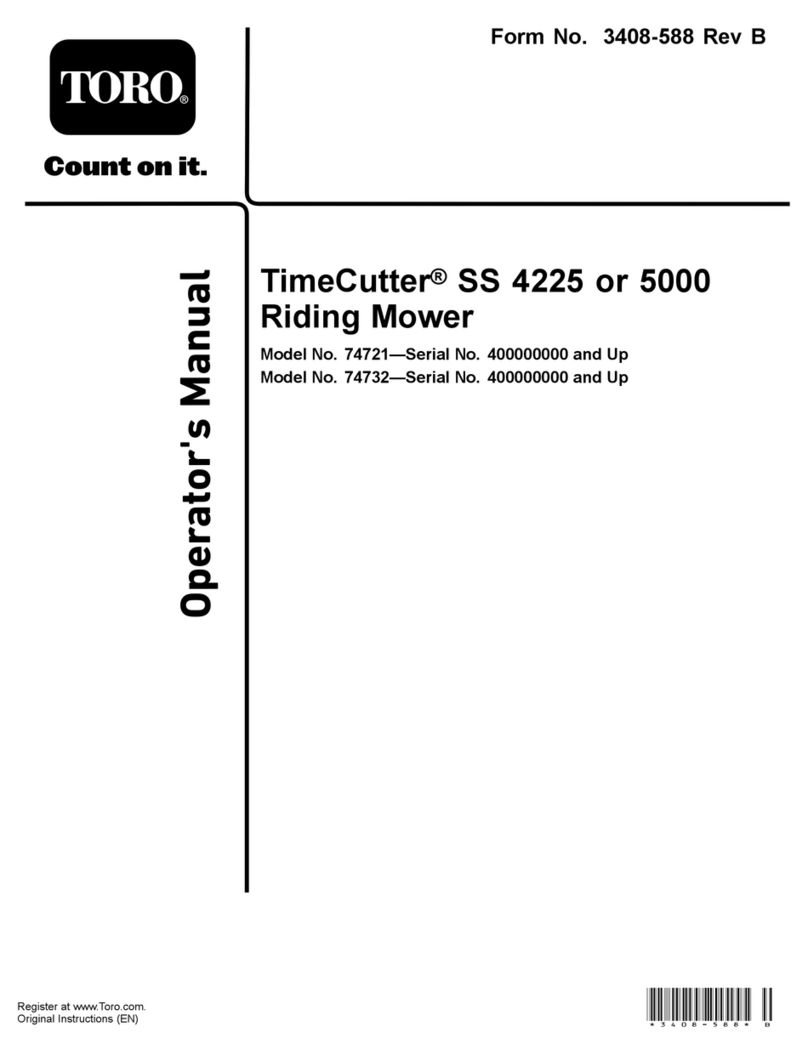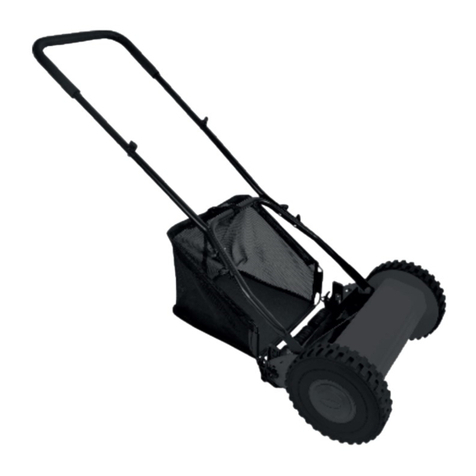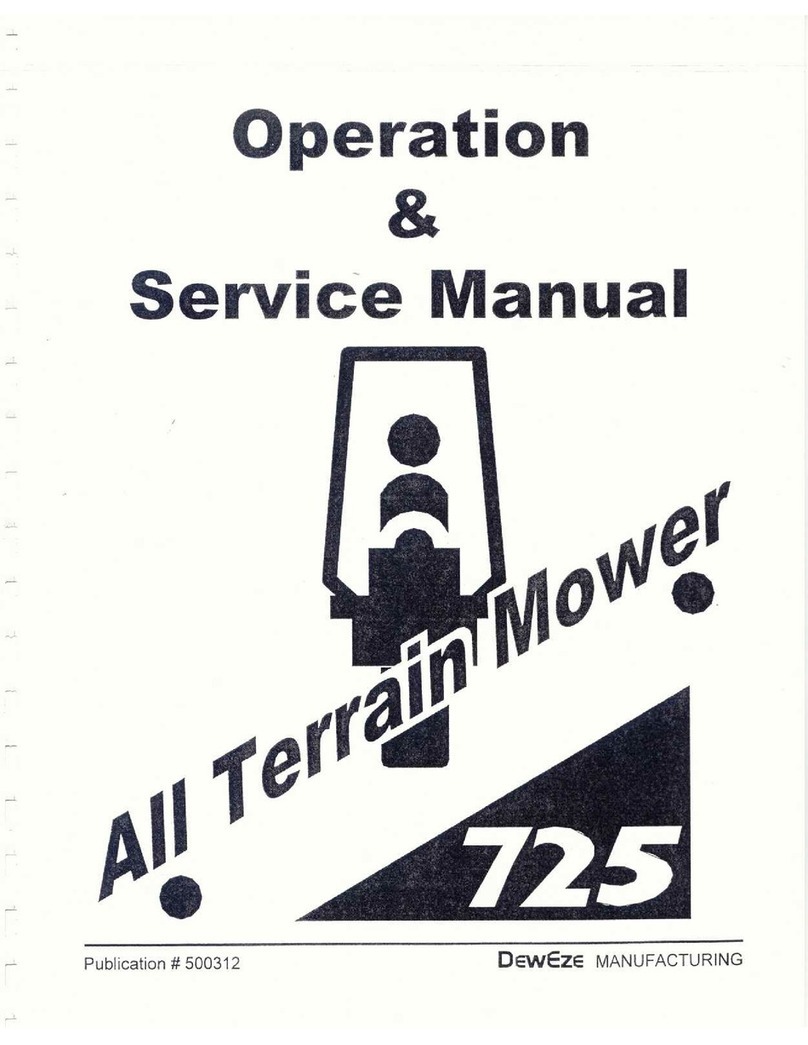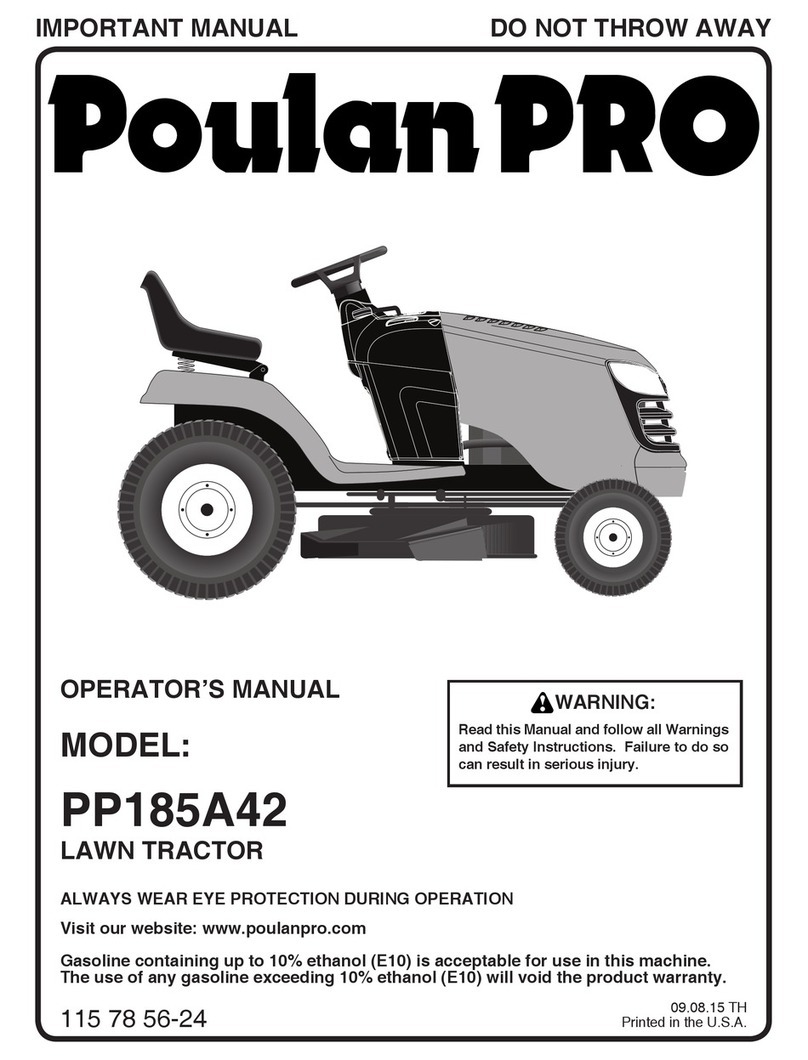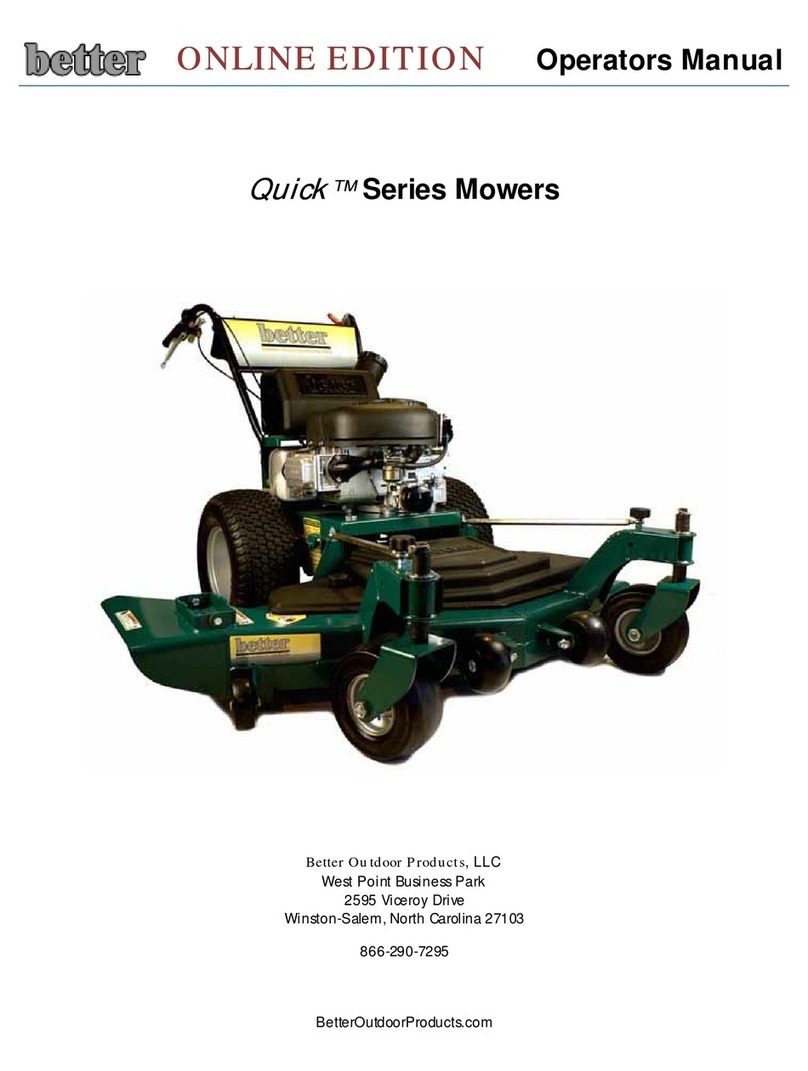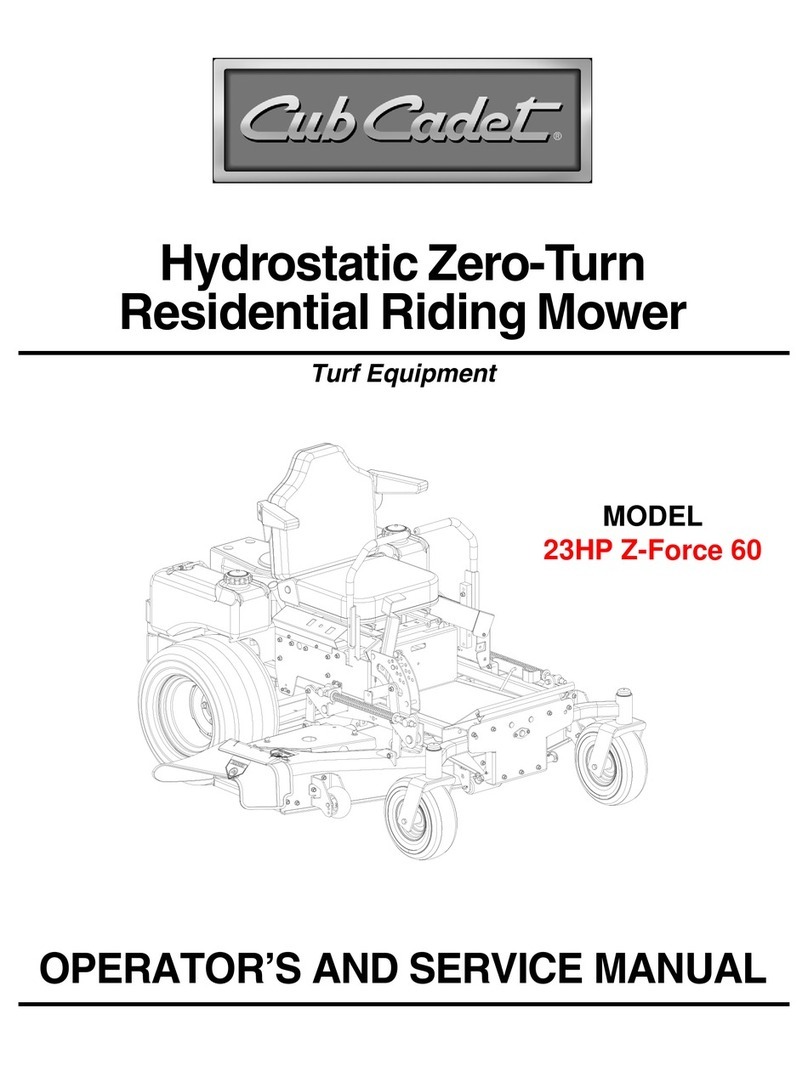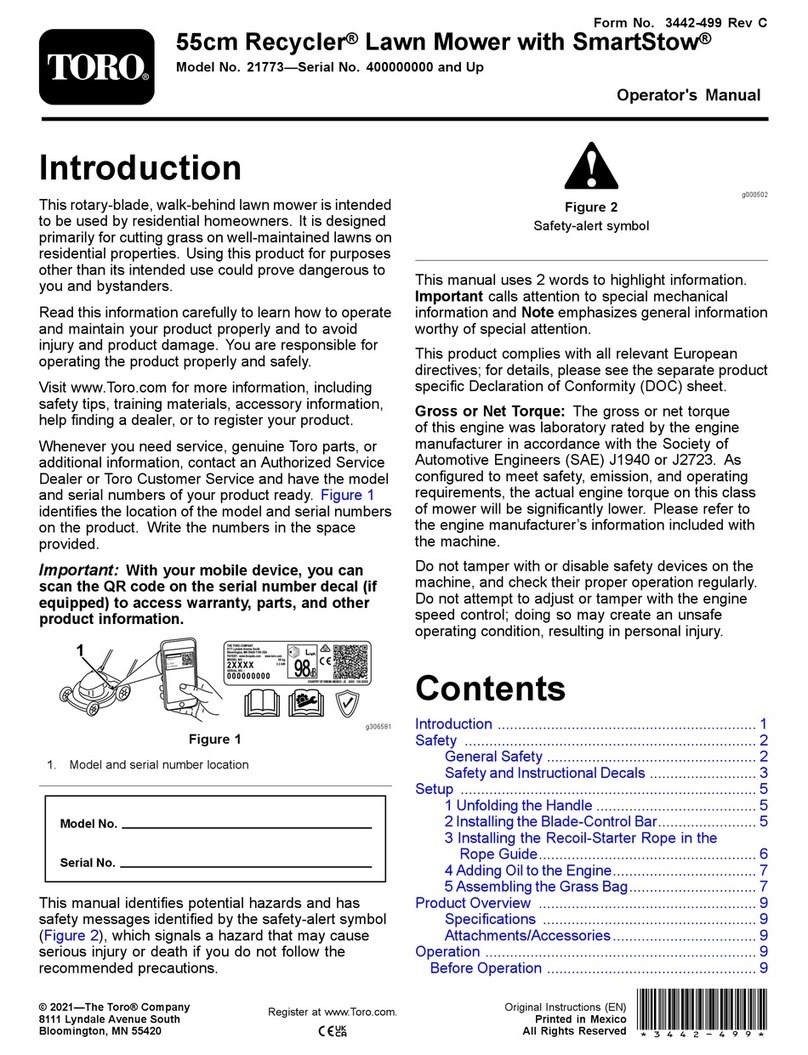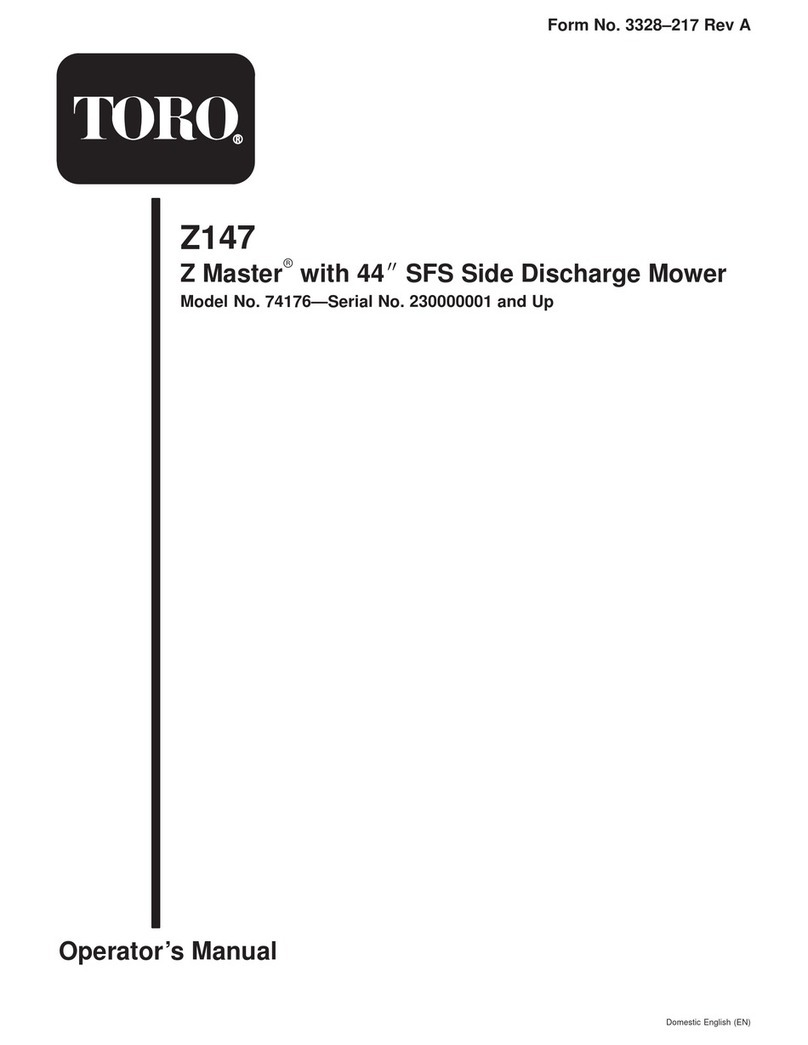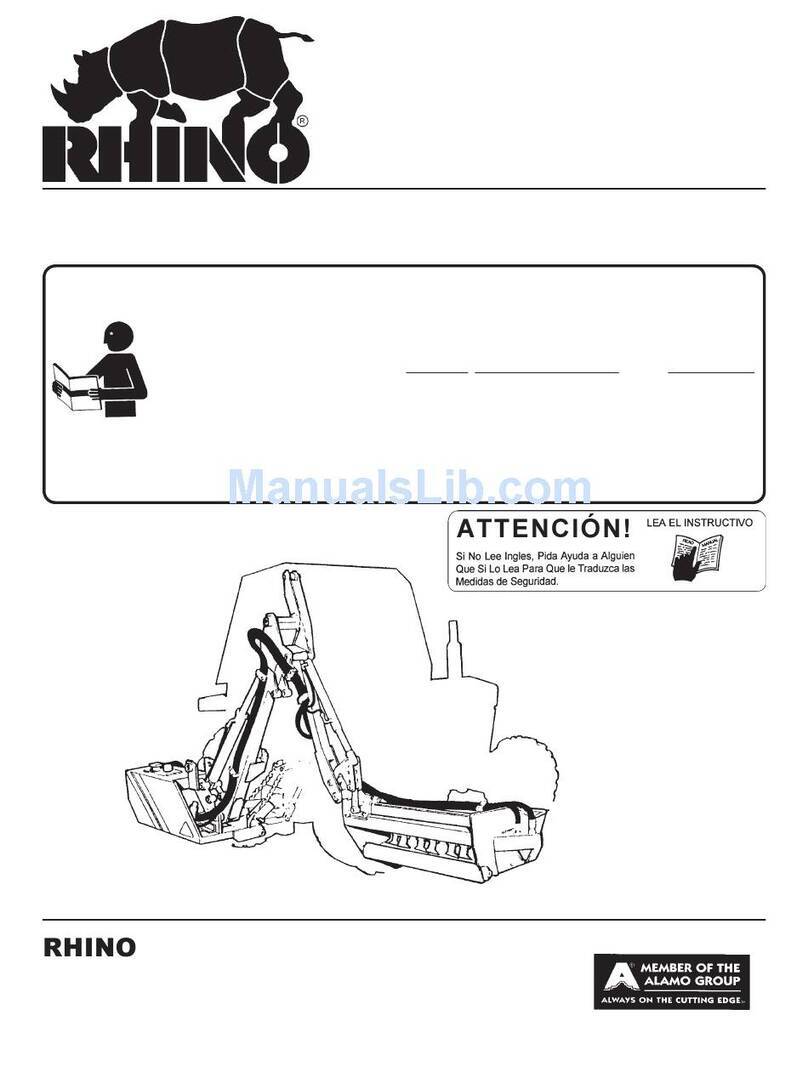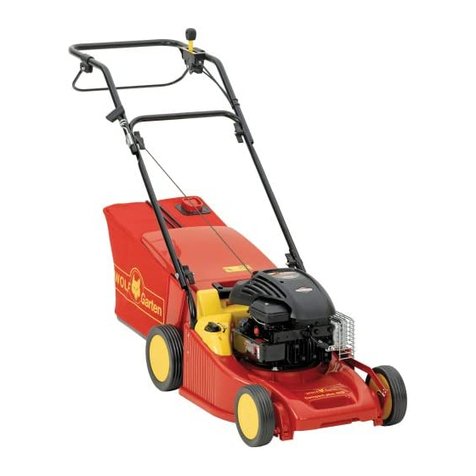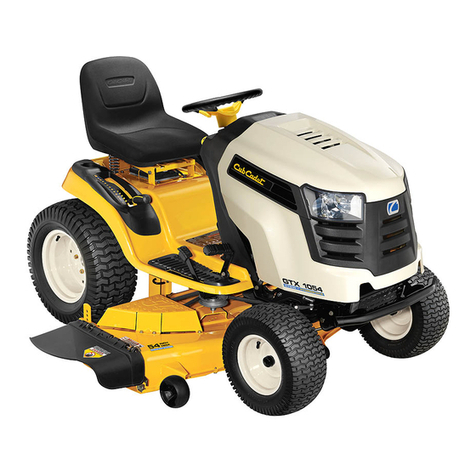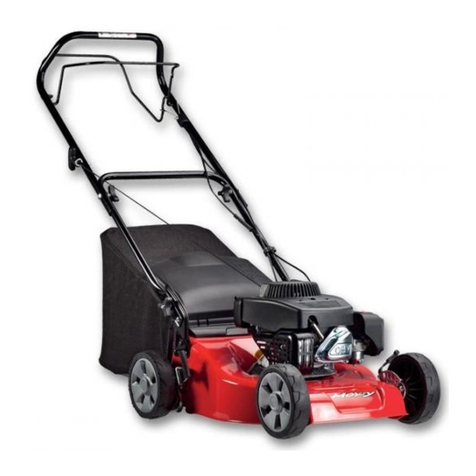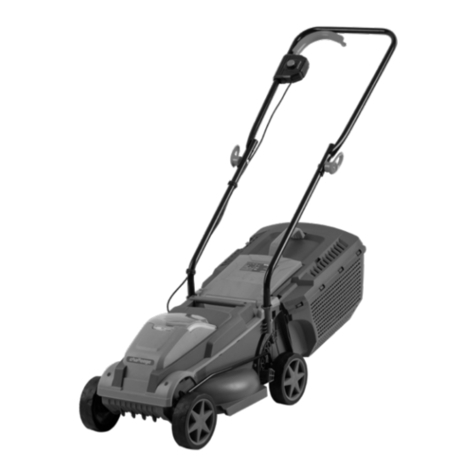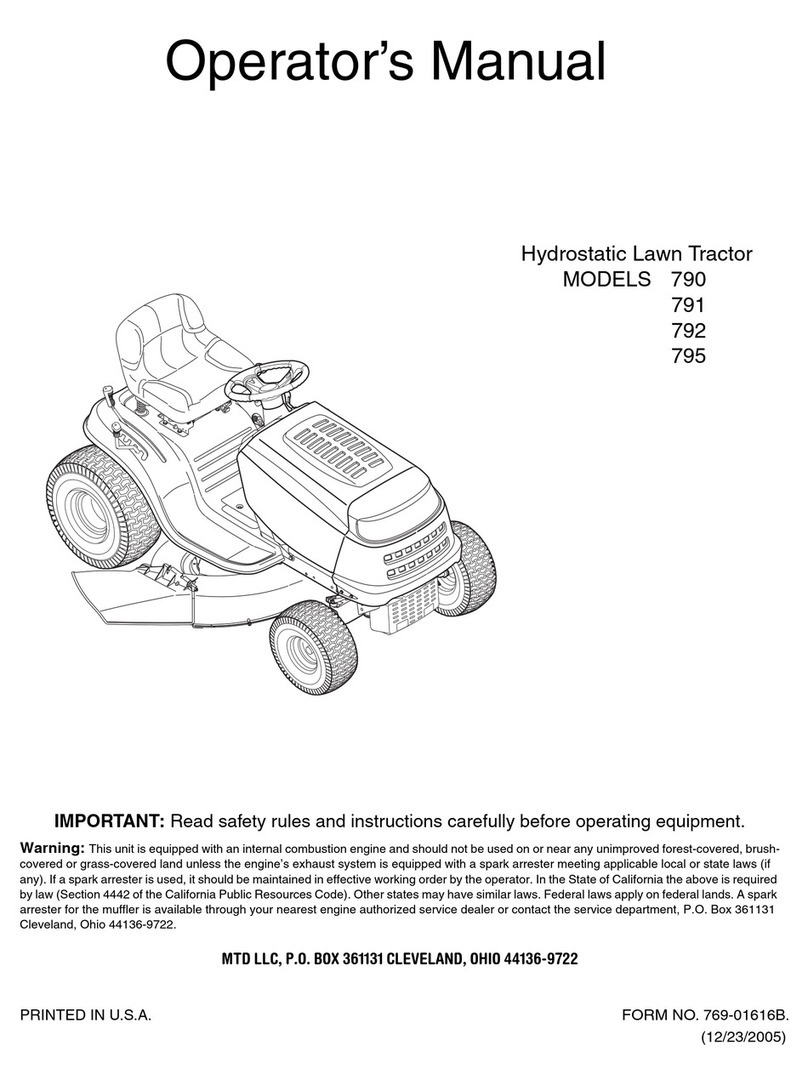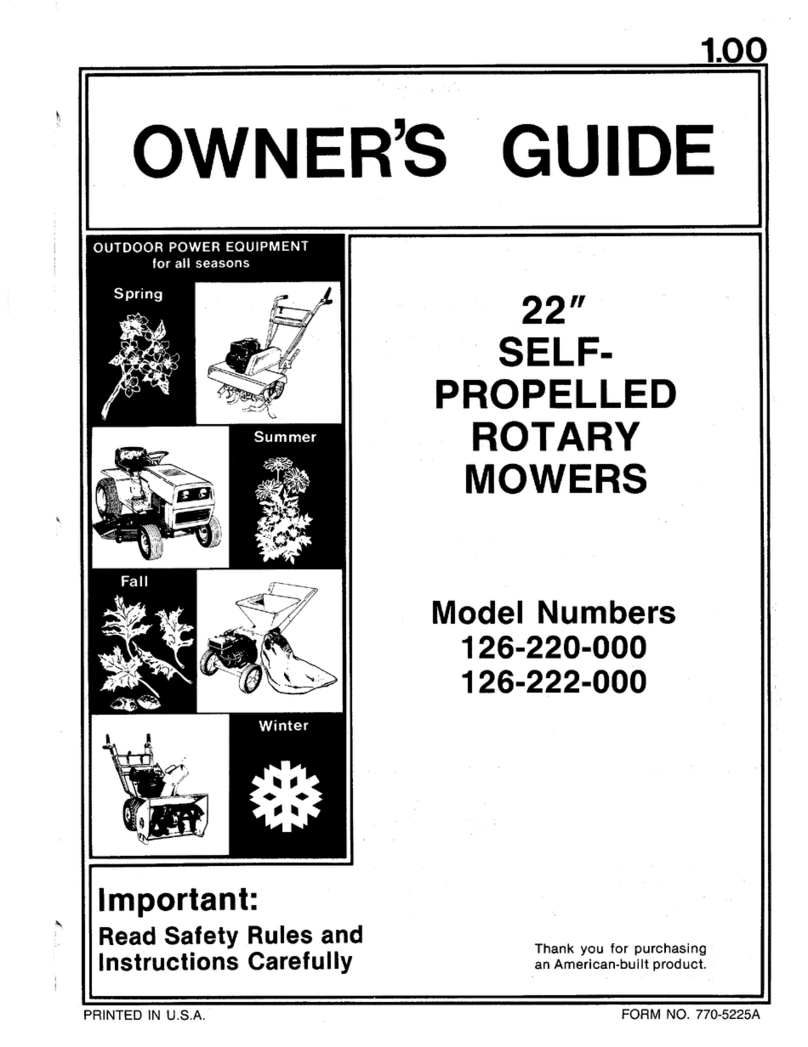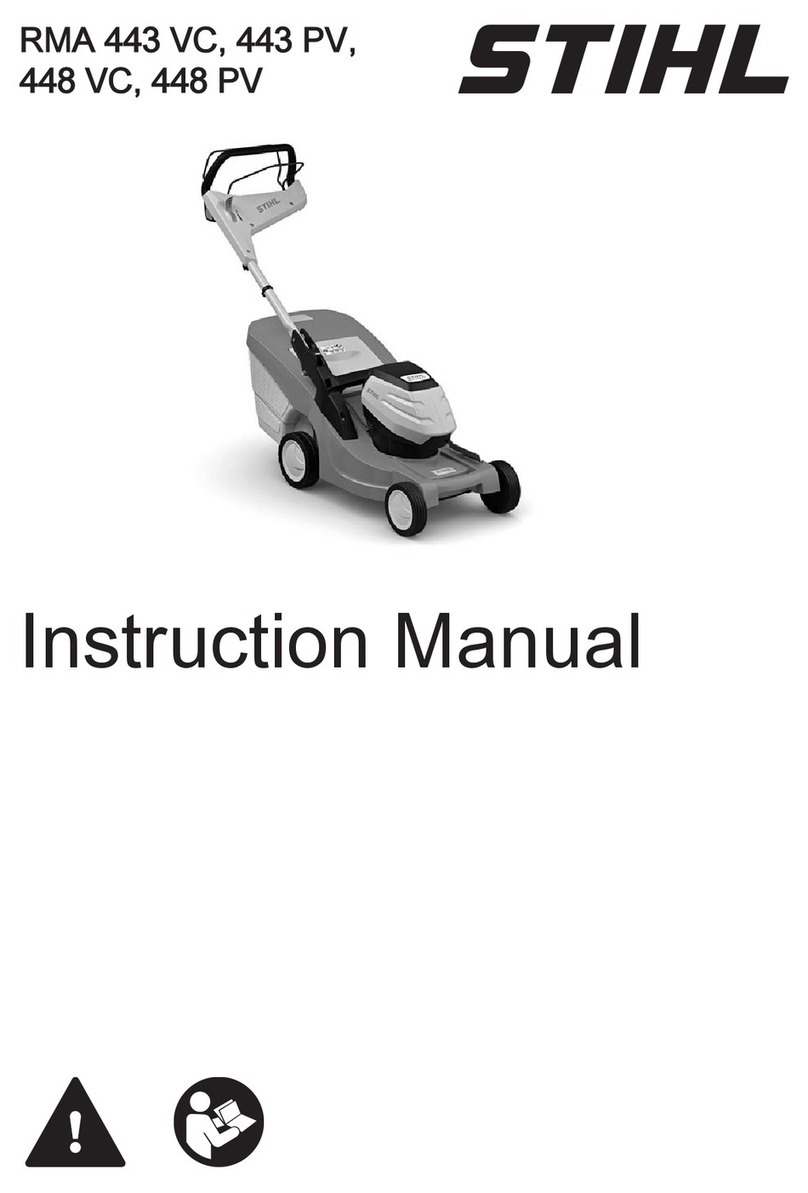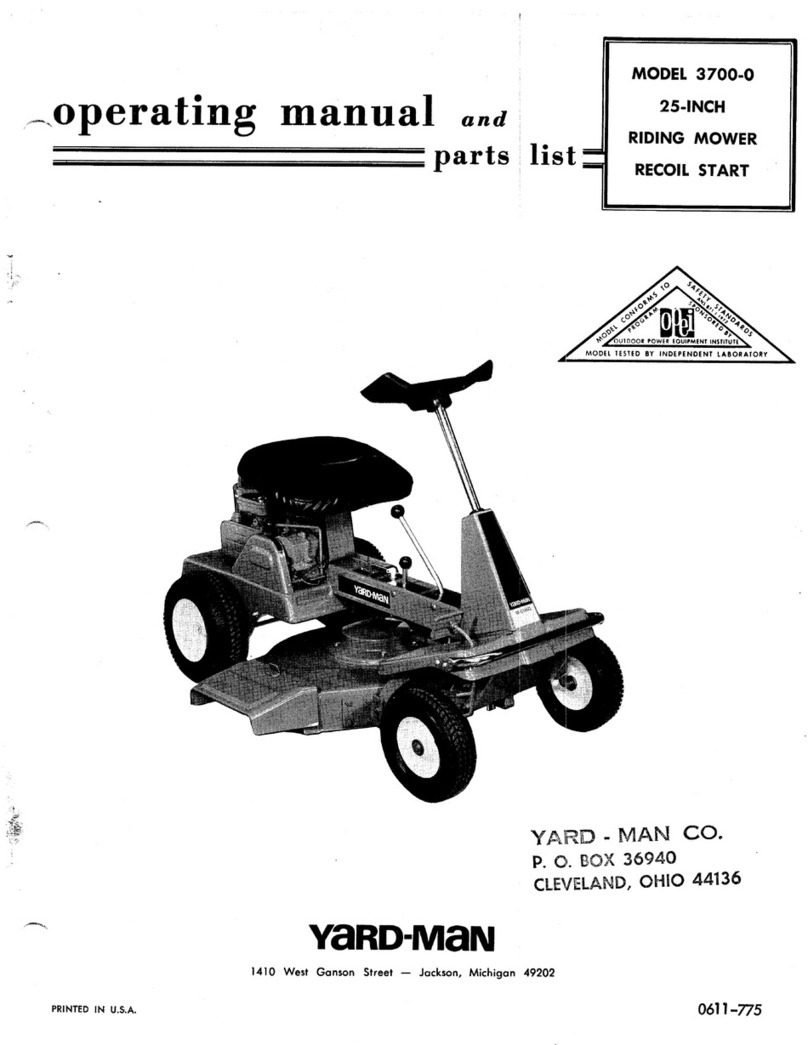
9
Brakes: Individual totally enclosed, multi-disc, wet brakes
and parking brakes on front traction wheels. Hydrostatic
braking through traction drive.
Electrical Features: 12-volt, 530 cold-cranking amperes
at 0° F (–18° C), 85-minute reserve capacity at 80° F (27°
C), maintenance-free battery. 55-amp alternator with l° C
regulator/rectifier. Automotive-type electrical system. Seat
switch, reel and traction interlock switches.
Controls: Foot-operated traction and brake pedals. Hand
operated throttle, speed control lever, parking brake lock,
ignition switch with automatic preheat cycle, single joy
stick control for cutting unit on/off and lift lower. Cutting
unit backlap switch under the operator's seat. Height-of-cut
selector knob located under the control panel.
Gauges: Hour meter, speedometer, fuel gauge, temperature
gauge, 4-bank warning lamp: oil pressure, water tempera-
ture, amps, and glow plug. 2-bank warning lamp: water in
fuel, water level.
Diagnostics; The Automatic Control Electronics, ACET
system allows precise timing and control of machine func-
tions for maximum reliability. Toro standard diagnostic
display connects to an electronic control unit to pinpoint
any electrical problems quickly and easily. Available
DATA LOGT system allows mechanic to find intermittent
problems.
General Specifications (approx.):
Width-of-Cut: 244 cm
Overall Width:
Transport 213 cm
Operational 279 cm
Overall Length: 305 cm
Height:
Without roll-over protection system installed: 152 cm
With roll-over protection system installed: 213 cm
Weight:
Model 03800 1,194 kg*
Model 03801 1,232 kg*
*With 5-Blade Cutting Units & full fluid levels
Engine: Peugeot, 4-cylinder, 4-cycle, overhead cam, 116
cu. in (1.9 liter) displacement liquid-cooled diesel engine.
38 hp (28 kW); governed to 2500 rpm high idle; 23.5:1
compression ratio, 3.27" (83 mm) bore x 3.46" (88 mm)
stroke. Automatic glow plug/starter interlock system.
Heavy-duty, 2-stage, remote air cleaner.
Main Frame: All-welded formed steel frame, includes
tie-down loops.
Cooling System: Rear-mounted, cross-flow agricultural
type radiator; 7 fins per inch. 7.1 liter capacity. Air to
oil cooler mounted to the rear of the radiator tips outward
for cleaning. Removable oil cooler/radiator screen.
Fuel System: Rotary fuel injection pump with energized-
to-run (ETR) fuel flow solenoid. Replaceable spin-on
fuel filter/water separator with water sensor. Fuel capaci-
ty: 64 liter.
Traction System: Servo-controlled hydrostatic system
driving double-planetary, gear-reduction, front-wheel dri-
ves. Foot pedal control of forward/reverse ground speed.
Toro 4-MaticR 4-Wheel Drive System only: Rear drive
axle coupled to hydrostatic transmission via an overrun-
ning clutch for full-time, on-demand 4-wheel drive. A
Roll Over Protective Structure and seat belt are standard.
Ground Speed: 0–10 mph forward; 0–4 mph reverse.
Cutting Unit Drive System: Reel motors feature quick
disconnect for removal or installation onto the cutting
unit. Cutting units can be driven from either end.
Seat: Deluxe high-back suspension seat with adjustable
fore and aft travel, weight and height. Tool box at the left
side of the seat.
Steering System: Power steering with dedicated power
source.
Tires: Two rear steering tires: 20 x 10.00–10, tubeless, 6-
ply rating. Two front traction drive tires: 29 x 12.00–15
tubeless, 6-ply rating. Recommended tire pressure for
front and rear tires is 15–20 psi.
Specifications
